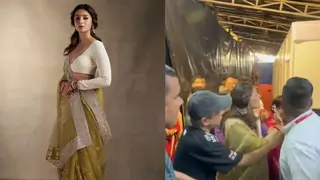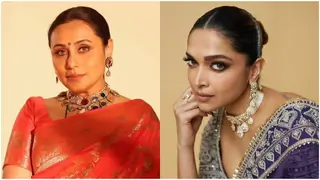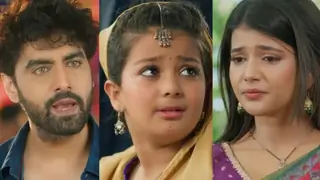|
Ustad Bade Ghulam Ali Khan, musicologists say, was the Tansen of the 20th century. Universally acknowledged as the greatest interpreter of the Patiala gayaki over the last 100 years, few artistes of the past have been held in such awe and reverence as he has been, even today.
Bade Ghulam Ali's family came from Kasur, a village in Punjab. Both his father Ali Baksh Khan and uncle Kale Khan were famous singers in those days. The two brothers were trained for a brief period by Banne Khan in Amritsar. Later they went to Tonk and took extensive talim from Kalu Mian, father of the celebrated singing duo Aliya Fattu, before finally settling down at Lahore. Ghulam Ali was initiated into vocal music as well as the sarangi at a very early age, mainly by his uncle Kale Khan. He also took vocal lessons from Baba Shinde Khan. He initially earned his living by playing sarangi before becoming a full-fledged singer. Countrywide publicity came to him soon after his debut concert in Kolkata and by the mid-40s he was a much-reputed singer.
Bade Ghulam Ali had a unique voice, a wide range spanning three octaves, effortless production, all-round sweetness and unparalleled flexibility and ease of movement in all tempi. His style possessed an exceptional lucidity and clarity in addition to serenity and calmness. With an extraordinary blend of technique and appeal Bade Ghulam Ali could render fluent khayals, sprightly thumris, erotic ghazals and soulful bhajans with an artistry all his own. Khansahib was obsessed with his riyaz. He spent all his free time practising paltas and taans to the accompaniment of the perfectly tuned swaramandal held in his lap. He formulated a very scientific way of voice culture, which gave him absolute command over his voice and the rare ability to encompass all forms of singing from regional folk to the purest khayals with extraordinary ease.
The Ustad was fascinated by nature. He would often translate the flying birds, the lashing waves of the turbulent sea or the simple gait of a young girl in his taan-sargams and in his various thumris. He would also give great importance to the poetic content of a song and elaborate them during his recitals in an exquisite manner. This became more evident in his renditions of thumris where he stood almost unmatched. His thumri was a perfect blend of both the Purab ang and the Punjab ang. He also applied various folk elements of northern India in his thumris and dadras, adding to these a special colour. Bade Ghulam Ali generally preferred known ragas like Malkauns, Bhupali, Bageshree, etc. to obscure ragas. He composed several bandishes under the pen name Sabarang. His renditions like the Hari Om Tatsat and the Ae Na Balam are world-renowned even now.
After the partition, Ustad Bade Ghulam Ali used to visit India from Lahore but owing to his growing popularity and the mass adulation he enjoyed in India, he became its citizen in 1958. Unfortunately at the peak of his career he was stricken with paralysis and was bedridden for about two years. It was the Ustad's extreme will power that helped him make a comeback around 1963 to the sheer delight of his innumerable fans. Though he managed to continue with his performances for another 5 years, his health took a turn for the worse and he died in 1968.
Ustad Bade Ghulam Ali Khan was awarded the Padma Bhushan in 1962. He was also a recipient of the Sangeet Natak Akademi award. It is our great fortune that today a number of his audio recordings in the form of LPs, cassettes and CDs are available in the market. Noted among his numerous disciples were his son Munawar Ali Khan, Prasun and Meera Banerjee, Irene Roychowdhuri and Sandhya Mukherjee. Ajoy Chakraborty, the acclaimed torchbearer of the Patiala gharana today was taught by the Ustad's son, Munawar Ali .
|





















